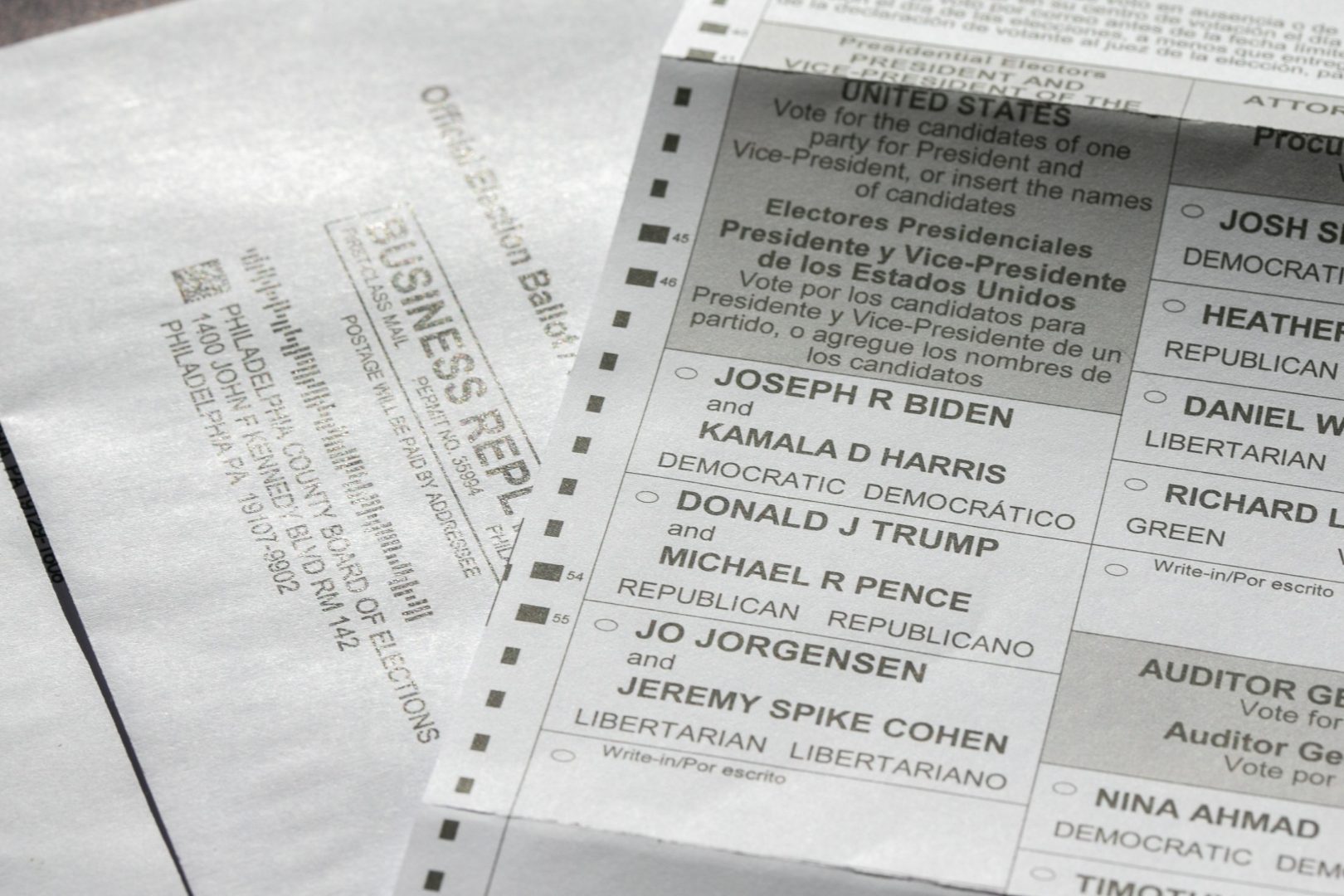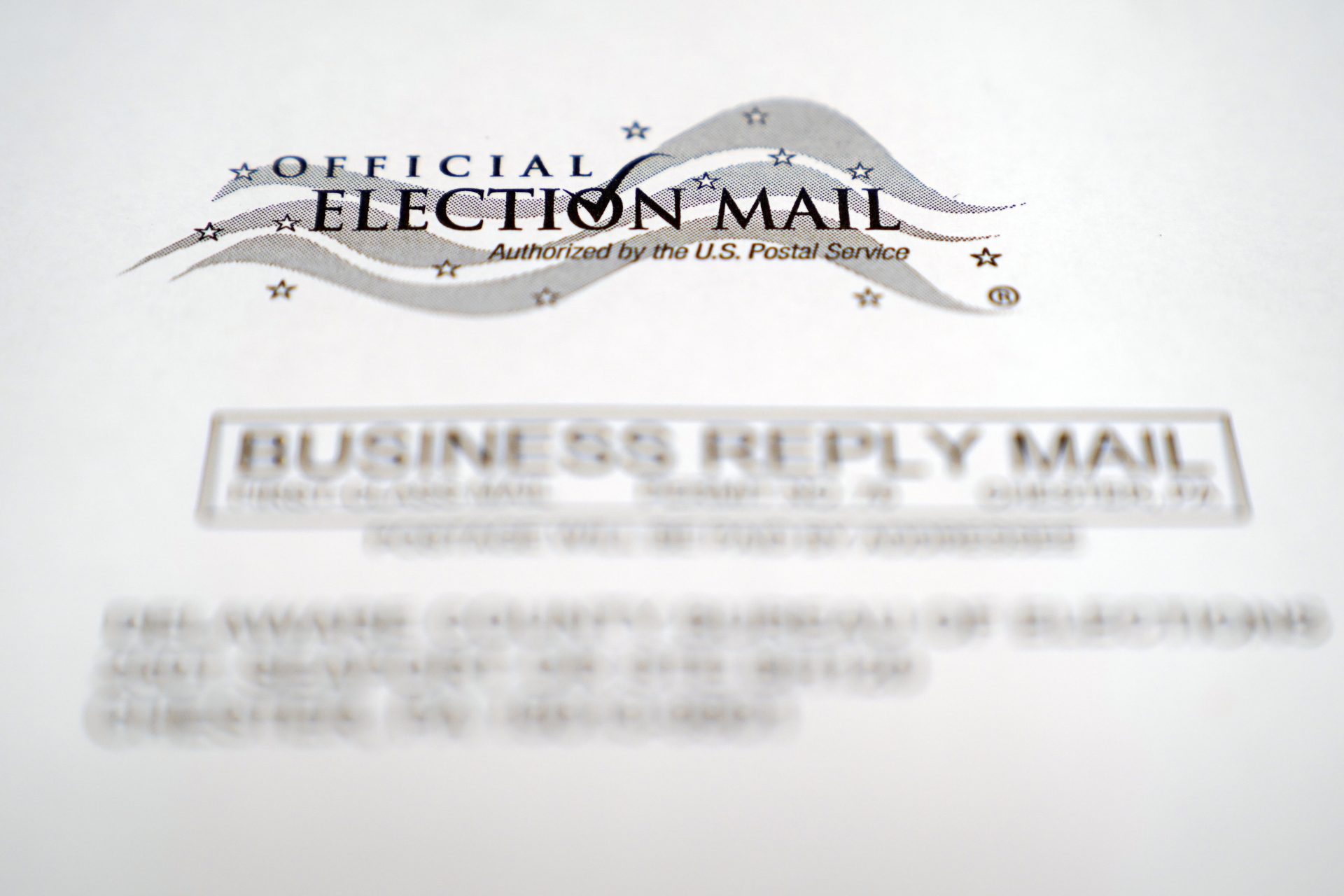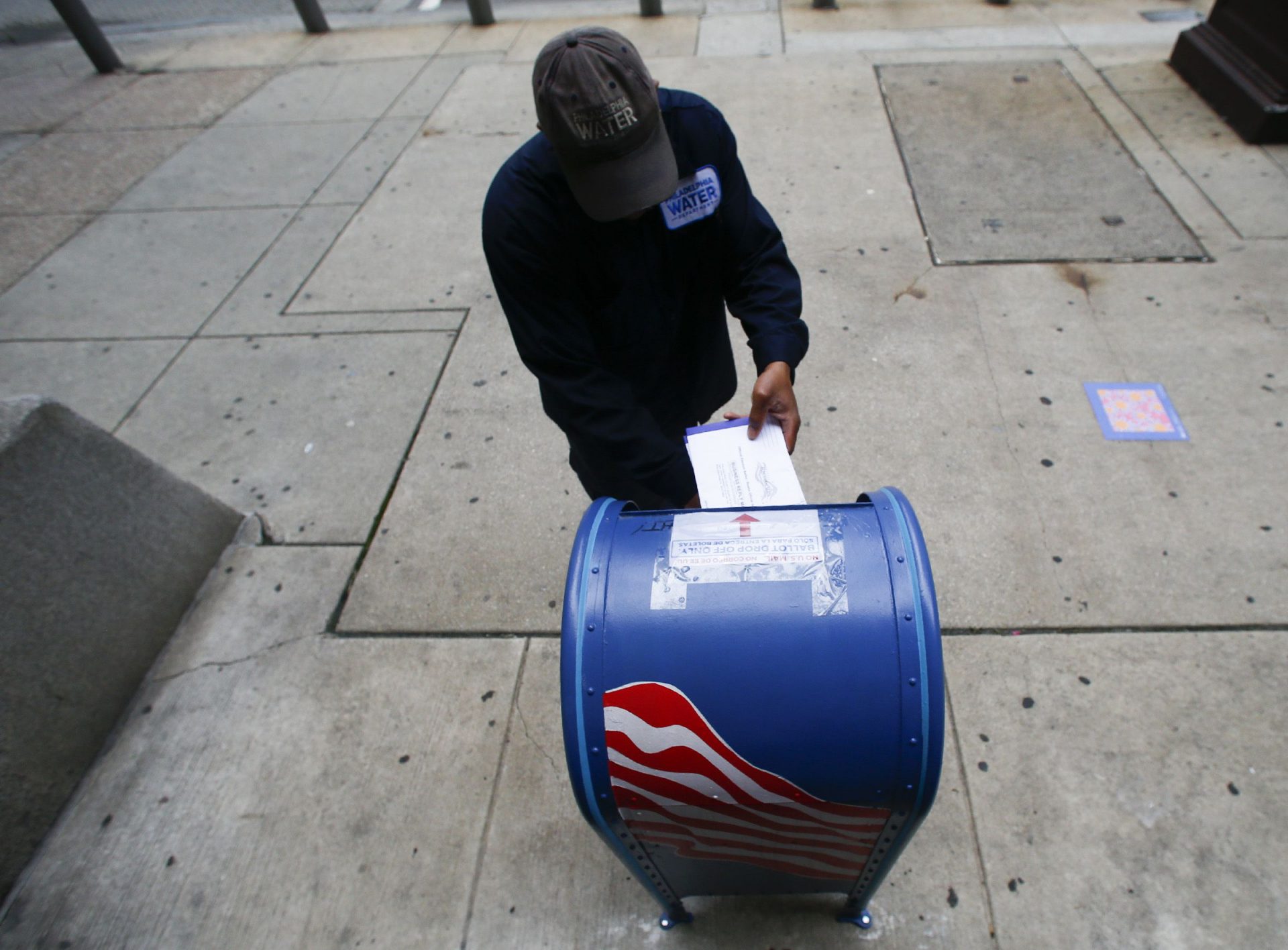
More than 690,000 Republicans have requested a mail-in or absentee ballot for the November election.
Alejandro A. Alvarez / Philadelphia Inquirer

More than 690,000 Republicans have requested a mail-in or absentee ballot for the November election.
Alejandro A. Alvarez / Philadelphia Inquirer

Alejandro A. Alvarez / Philadelphia Inquirer
More than 690,000 Republicans have requested a mail-in or absentee ballot for the November election.
This article is made possible through Votebeat, a nonpartisan reporting project covering local election integrity and voting access. This article is available for reprint under the terms of Votebeat’s republishing policy.
(Harrisburg) — The U.S. Supreme Court on Monday allowed Pennsylvania’s 3-day extension for accepting mail-in ballots, with justices narrowly denying a request by state Republicans to intervene on the grounds that the state’s highest court had overstepped its authority.
Under state law, counties can accept mail-in ballots that arrive by 8 p.m. on Election Day. But in September, anticipating unprecedented voting by mail and U.S. Postal Service delays, the state Supreme Court ruled officials could accept ballots until 5 p.m. on Nov. 6.
Late-arriving ballots must be postmarked by Nov. 3, though those without a postmark will be counted unless there is a “preponderance of evidence” they were mailed after Election Day.
State Republican leaders appealed that decision to the U.S. Supreme Court, saying the legislature, not the courts, should determine when and how an election takes place. The U.S. Supreme Court deadlocked 4-4 on how to handle the request, which resulted in a denial.

Matt Slocum / AP Photo
In this Oct. 13, 2020, photo, an envelope of a Pennsylvania official mail-in ballot for the 2020 general election in Marple Township, Pa.
“Pennsylvania voters deserve clarity and confidence in our election process — and tonight’s ruling from the United States Supreme Court makes clear our law will stand despite repeated attacks,” state Attorney General Josh Shapiro said in a statement.
Four conservative justices — Clarence Thomas, Samuel Alito, Neil Gorsuch, and Brett Kavanaugh — sought to grant the state GOP’s request, which means Chief Justice John Roberts sided with the three remaining liberal members of the court.
The decision to reject the case, issued Monday evening, was not accompanied by any written explanation, so it’s impossible to know why the justices voted as they did.
The election on Nov. 3 will be the first general election held under Pennsylvania’s new mail-in voting system, and county officials expect the high interest in the presidential contest plus fears of the coronavirus to lead to enormous numbers of votes cast this way.
Results of the Nov. 3 election in Pennsylvania, and across the country, likely won’t be known for days.
The counting of ballots continues after election night most years. This year’s expected surge in mailed ballots means election offices will need extra time to tally all the votes.
As that occurs, some candidates may call for the counting to end and for themselves to be declared the winner. However, winners will be decided when all the votes are counted — that’s the American election system at work.
WITF’s journalists will cover that process, and WITF will rely on The Associated Press to call races for the winner based on the AP’s rigorous, time-tested method.
As of Monday, voters had requested 2.8 million mail-in and absentee ballots — 1.79 million by Democrats and nearly 694,000 by Republicans, according to Pennsylvania Department of State data. Already, nearly 900,000 had been returned.
It’s impossible to determine how many ballots would have been rejected had the high court sided with Republicans. But given early indications that far more Democrats plan to vote by mail than Republicans, a GOP victory would probably have benefitted President Donald Trump.
Elections officials sought the extension for several reasons. Not only were there concerns about mail delays and a record number of mail-in ballot applications, but also the tight, seven-day turnaround between the last day voters can request a mail-in ballot and Election Day.
The state Supreme Court weighed two options to remedy that: move back the deadline to request a mail ballot, or extend the deadline for counties to receive a mail ballot. By a 4-3 vote, justices chose the latter.
Either option the court chose would have sparked a question of whether federal law was violated, because the U.S. Constitution says the legislature determines the time and manner of an election, not the courts, said Bruce Ledewitz, a constitutional law professor at Duquesne University.
Still, Ledewitz said it was unlikely the country’s high court would intervene.
“The U.S. Supreme Court has been ducking a lot of these kinds of cases lately,” he said. “This is certainly not the one to take.”
Richardson Dilworth, a politics professor at Drexel University, said that in his experience, Democrats assume that higher turnout is going to help them, and lower turnout is going to help Republicans. So it’s conceivable that part of the GOP’s strategy in the battleground state was to block more Democratic votes, and if that’s at the expense of a few Republican votes, so be it.
“If we nullify those three days’ worth of ballots and we assume that those three days of ballots are the same as the overall ratio of mail-in ballot requests, that sounds like a great Republican strategy because sure, you’re nullifying GOP votes, but for every GOP vote nullified, there’s two Democrat votes nullified,” he said before Monday’s ruling.
House Speaker Bryan Cutler, one of the Republicans who filed a brief supporting the Senate GOP’s appeal to the U.S. Supreme Court, said a ballot shouldn’t be counted if it wasn’t received by 8 p.m. on Election Day, per state law, regardless of any delays.

Yong Kim / Philadelphia Inquirer
As of mid-week, 2.6 million people had requested and been approved for a mail-in or absentee ballot, and 518,000 had been returned.
“The reality is, there’s going to potentially always be someone who falls on the other side of the deadline,” he said in an interview before the U.S. Supreme Court issued its ruling. “The big issue, I think, is consistency across all modalities of voting as well as the application of the law, and in this case, that’s not happening.”
Tens of thousands of mail-in and absentee ballots arrived in the week after Pennsylvania’s June 2 primary. Most were counted only because Democratic Gov. Tom Wolf issued an executive order extending the deadline by which they could be received in Philadelphia and five other counties as part of the emergency disaster declaration he issued in response to civil unrest.
But those ballots still had to be postmarked by 8 p.m. on election night. For the general election, the state Supreme Court said as long as there’s no evidence to the contrary, ballots that are missing a postmark can still be counted, as long as they’re in by 5 p.m. Nov. 6.
“You want to be as accommodating as you can, but within reason, and counting ballots days after an election with no postmark on them is not reasonable to me,” said Al Schmidt, a Republican commissioner in Philadelphia. “There has to be some burden, some evidence that a vote is cast on or before Election Day.”
Dale Schneer, who was working on a house under construction in Phoenixville last week, said he supports the absentee ballots that overseas military personnel like his son use and trusts those votes will be counted. But he opposes the legislature’s decision to extend mail-in voting to all Pennsylvanians, saying more voting options makes things more complex.
A Republican, 61-year-old Schneer said he’s planning to vote in person on Election Day, and thinks allowing ballots to be counted past Nov. 3 is “asinine.”
“It’s Election Day, not Election Week or Election month,” he said.
Schneer said he’s planning to vote for Trump, who appears to be trailing his Democrat opponent, former Vice President Joe Biden, in the latest polls.
For that reason, Schneer wasn’t sure late ballots shouldn’t be counted, because “we might need all the votes we can get.”
100% ESSENTIAL: Spotlight PA relies on funding from foundations and readers like you who are committed to accountability journalism that gets results. If you value this reporting, please give a gift today at spotlightpa.org/donate.

Sometimes, your mornings are just too busy to catch the news beyond a headline or two. Don’t worry. The Morning Agenda has got your back. Each weekday morning, host Tim Lambert will keep you informed, amused, enlightened and up-to-date on what’s happening in central Pennsylvania and the rest of this great commonwealth.
The days of journalism’s one-way street of simply producing stories for the public have long been over. Now, it’s time to find better ways to interact with you and ensure we meet your high standards of what a credible media organization should be.